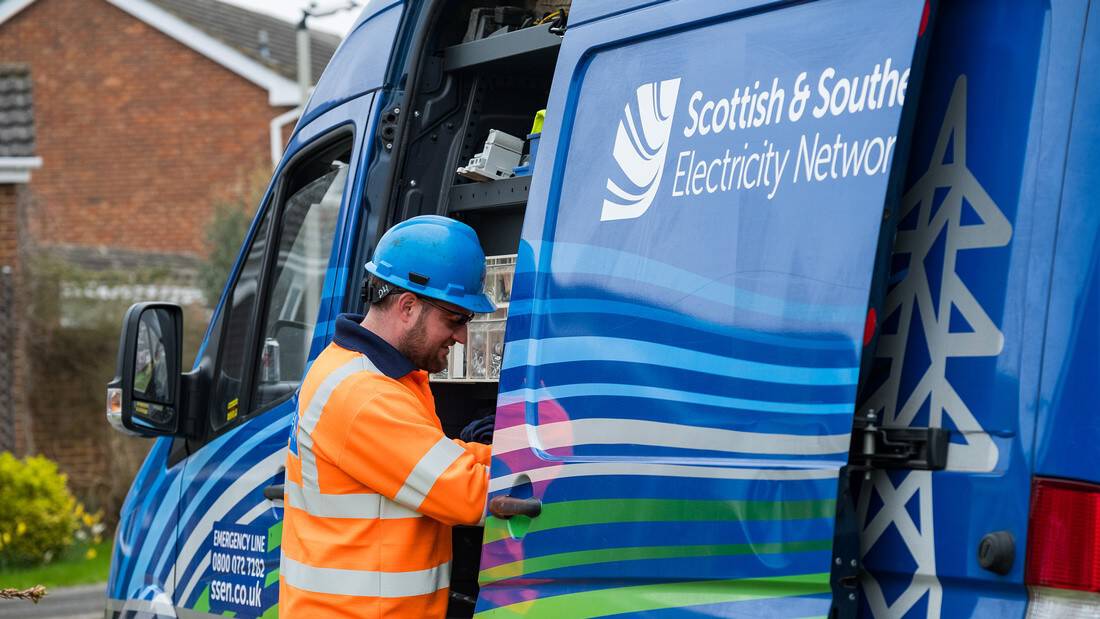In the current climate of energy uncertainty and transition towards net zero, utility companies are under intense scrutiny. One such company that’s been in the spotlight is SSE (LSE: SSE), a major player in the UK’s electricity market. With its fingers in many pies—from generation and transmission to distribution and supply—SSE is a key figure in Britain’s energy landscape. But should investors be paying close attention to the SSE share price?
Mixed performance
SSE’s recent financial performance paints a nuanced picture. The good news is that the company has become profitable this year, a significant achievement in the challenging energy sector. The company reported earnings of £1.71bn over the last year, translating to earnings per share (EPS) of £1.57.
Moreover, the business boasts some healthy profitability ratios. With a gross margin of 41.6% and a net profit margin of 16.36%, the company demonstrates some impressive cost control and operational efficiency. In the utility sector, where margins can be tight, these figures are encouraging for the future.
However, it’s not all rosy. In its most recent earnings report, SSE just missed analysts’ expectations. This shortfall suggests that while the business is profitable, it’s struggling to meet the market’s growth expectations as investors demand more from companies in the sector.
SSE’s share price has struggled over the past year, declining by 4.6%, underperforming both its industry peers and the broader UK market.
The valuation
Valuation metrics suggest the shares might be attractively priced. The price-to-earnings (P/E) ratio stands at 11.4 times, significantly below the UK market average of 16.7 times.
Here, the outlook is fairly modest. Analysts forecast earnings growth of 3.41% per year, a figure that’s steady but not spectacular. This tepid growth projection might explain why, despite the lower P/E ratio, investors aren’t rushing to buy shares.
Dividend
For many investors, utility stocks are synonymous with dividends. After all, these companies often operate in regulated markets with stable cash flows, making them ideal for income-seeking investors.
However, the yield is unlikely to be too much of a draw to new investors, with a fairly volatile record of dividend yields in recent years. While the current payout ratio of 38% is sustainable, suggesting room for future increases, its historical dividend stability leaves something to be desired.
Risks
For me, the primary concern is the debt level. With a debt-to-equity ratio of 73.9%, the company has a high level of debt. While some debt is normal for capital-intensive businesses like utilities, leverage can become problematic with interest rates at recent highs.
Overall
SSE has several attractive features—profitability, a lower P/E ratio than the market, and a decent dividend yield. Its core business in electricity generation, transmission, and distribution also puts it at the heart of the UK’s energy future.
However, there are notable concerns. Mixed earnings, high debt, modest growth forecasts, and unstable dividend history might deter some investors. This could change if the SSE share price stabilises and builds some momentum. I’ll be adding it to my watchlist for now.
The post Should I be paying attention to the SSE share price? appeared first on The Motley Fool UK.
5 Shares for the Future of Energy
Investors who don’t own energy shares need to see this now.
Because Mark Rogers — The Motley Fool UK’s Director of Investing — sees 2 key reasons why energy is set to soar.
While sanctions slam Russian supplies, nations are also racing to achieve net zero emissions, he says. Mark believes 5 companies in particular are poised for spectacular profits.
Open this new report — 5 Shares for the Future of Energy — and discover:
Britain’s Energy Fort Knox, now controlling 30% of UK energy storage
How to potentially get paid by the weather
Electric Vehicles’ secret backdoor opportunity
One dead simple stock for the new nuclear boom
Click the button below to find out how you can get your hands on the full report now, and as a thank you for your interest, we’ll send you one of the five picks — absolutely free!
Grab your FREE Energy recommendation now
More reading
Revealed! One of the FTSE 100’s greatest passive income stocks
With a 5% yield, how attractive is the Lloyds dividend?
5 dividend shares I’d buy today for passive income
Here’s why this FTSE 250 stock looks more attractive than ever to me!
Is NatWest still one of the best FTSE 100 shares to buy now? Here’s what the charts say…
Gordon Best has no position in any of the shares mentioned. The Motley Fool UK has no position in any of the shares mentioned. Views expressed on the companies mentioned in this article are those of the writer and therefore may differ from the official recommendations we make in our subscription services such as Share Advisor, Hidden Winners and Pro. Here at The Motley Fool we believe that considering a diverse range of insights makes us better investors.

